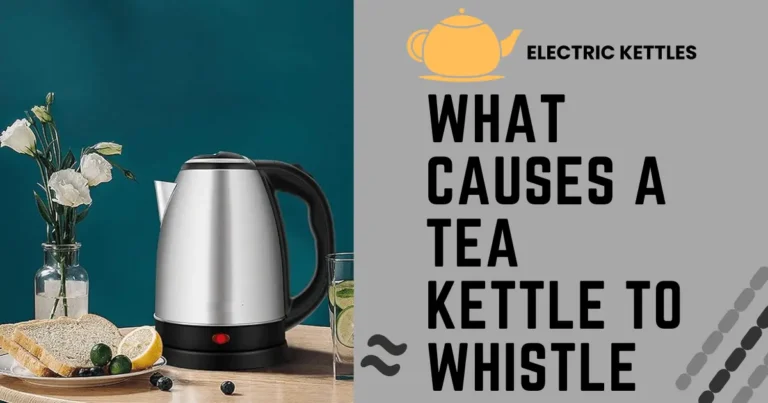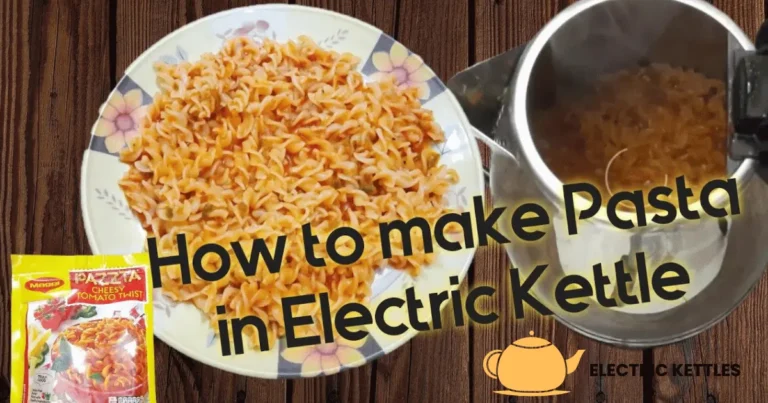How to Use Electric Kettle
An electric kettle is quick and easy to use. It heats water faster than a stovetop kettle or microwave. This saves you time when making tea, coffee, or instant meals. It’s a convenient tool for any kitchen.
Electric kettles are also energy-efficient. They use less power because they heat water directly. Many models come with safety features like automatic shut-off when the water boils. This reduces the risk of overheating or boiling dry. An electric kettle is a practical choice for daily use.
Table of Contents
Safety Precautions Before Use
Before using an electric kettle, it’s important to take some safety precautions. Start by checking the power supply. Make sure the cord is in good condition and free of any damage. Plug the kettle into a working outlet, and avoid using it if the cord is frayed or the plug is loose. Ensuring the power connection is secure reduces the risk of electrical accidents.
When filling the kettle, pay attention to the water level. Do not overfill the kettle, as this can cause hot water to spill out when it boils, leading to burns or damage to the surrounding area. Most kettles have a maximum fill line marked inside. It’s also crucial to make sure the lid is securely closed before turning on the kettle to prevent spills.
Never operate the kettle without water. Running a dry kettle can overheat the heating element, which can damage the appliance or even start a fire. Always ensure there’s enough water to cover the heating element before switching on the kettle. By following these simple steps, you can safely enjoy the convenience of your electric kettle.
5 Steps to Use an Electric Kettle
You can safely and effectively use your electric kettle for a variety of hot water needs.
Step 1. Filling the Kettle with Water
Start by removing the kettle from its base. Open the lid and fill the kettle with cold water. Be sure to check the maximum fill line inside the kettle to avoid overfilling. If your kettle has a filter, ensure it’s properly in place.
Step 2. Placing the Kettle on the Base
Once the kettle is filled, close the lid securely. Place the kettle back on its power base. Make sure it sits properly on the base, as this ensures the electrical connection is made.
Step 3. Turning On the Kettle
Plug the kettle into a power outlet if it’s not already connected. Most kettles have a switch or button to start heating the water then press it to turn on the kettle. You’ll typically see an indicator light that shows the kettle is in operation.
Step 4. Monitoring the Boiling Process
As the water heats up, you may hear some noise from the kettle, which is normal. Modern kettles automatically turn off once the water reaches a boil, but you can keep an eye on it if your kettle doesn’t have this feature. Avoid opening the lid during this process to prevent steam burns.
Step 5. Turning Off the Kettle
Once the water has boiled, the kettle will automatically shut off, or you can manually turn it off by flipping the switch. Carefully lift the kettle off the base, using the handle to pour the hot water. Be cautious of the steam and hot surfaces. After use, unplug the kettle and allow it to cool before cleaning or storing it.
Cleaning and Maintaining Your Electric Kettle
Proper cleaning and maintenance of your electric kettle are essential to keep it functioning well and extend its lifespan. Start by regularly cleaning the exterior of the kettle. Use a damp cloth to wipe down the outer surface, and avoid using harsh chemicals or abrasive materials that could damage the finish. Make sure the kettle is unplugged and completely cool before cleaning.
For the interior, regular cleaning is important to remove any mineral deposits that build up over time, especially if you use hard water. To descale the kettle, fill it with a mixture of equal parts water and white vinegar, then bring it to a boil. Once boiled, turn off the kettle and let the solution sit for about 15-20 minutes. Afterward, pour out the solution and rinse the kettle thoroughly with fresh water. You may need to repeat this process if the build-up is significant.
After cleaning, always dry the kettle completely before storing it. Leave the lid open to allow any remaining moisture to evaporate, which helps prevent mold or unpleasant odors. Also, periodically check the kettle’s filter, if it has one, and clean or replace it as needed. By taking these steps, you can keep your electric kettle in good working order and ensure it remains safe and efficient for daily use.

Common Issues
By being aware of these common issues and knowing how to address them. You can keep your electric kettle in good working condition and avoid potential hazards.
1. Kettle Not Turning On
If your kettle doesn’t turn on, first check the power supply. Ensure the kettle is properly plugged in and the outlet is working. If the cord or plug is damaged, stop using the kettle and consider replacing it. Another possible issue could be the kettle not sitting correctly on its base make sure it’s securely positioned. If the problem persists, the heating element or internal fuse might be faulty, requiring professional repair or replacement.
2. Water Not Boiling
If your kettle isn’t boiling water, it could be due to overfilling. Check the water level and ensure it’s within the recommended range. Another reason could be a malfunction in the thermostat, which regulates the temperature. If the water heats up but doesn’t reach boiling, the thermostat may need to be recalibrated or replaced. Descaling the kettle can also help, as mineral build-up can affect heating efficiency.
3. Strange Noises During Operation
It’s normal for kettles to make some noise while boiling water, but unusual or loud noises could indicate a problem. If you hear rattling or popping sounds, it might be due to mineral deposits on the heating element. Descaling the kettle should resolve this issue. If the noise continues or seems unusual, it’s best to have the kettle inspected for any internal faults.
4. Kettle Leaking
A leaking kettle can be caused by cracks in the body, a loose lid, or a faulty seal. Check the kettle for any visible damage and ensure the lid is closing properly. If the leak is coming from the base, it could be a sign of a more serious issue, such as a compromised heating element or seal. In this case, it’s advisable to stop using the kettle and seek a replacement or professional repair.
FAQs
Q1. Can I use an electric kettle for boiling milk?
It’s not recommended to boil milk in an electric kettle. Milk can spill over and damage the heating element.
Q2. How long does it take to boil water in an electric kettle?
It usually takes 3 to 5 minutes to boil water, depending on the kettle’s capacity and power.
Q3. Is it safe to leave water in the kettle overnight?
It’s best to empty the kettle after each use. Leaving water inside can lead to mineral build-up and affect taste.
Q4. Can I use the kettle without the lid?
No, the kettle should always be used with the lid securely closed. This ensures safe and efficient boiling.
Q5. What should I do if my kettle smells or tastes funny?
Clean the kettle with vinegar and water to remove any odors or tastes. Rinse thoroughly before use.
Summing Up
Using an electric kettle is simple and convenient. By following the steps and safety tips, you can easily heat water for your favorite drinks or meals. Regular cleaning and maintenance will keep your kettle in good condition, ensuring it works efficiently and lasts longer.
Remember to always use the kettle with care. Check the power supply, avoid overfilling, and never operate the kettle without water. If you encounter any issues, address them promptly to prevent further problems. With proper use, an electric kettle can be a valuable tool in your kitchen, making daily tasks quicker and easier.







